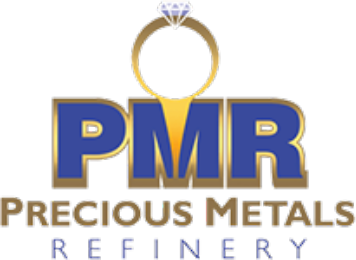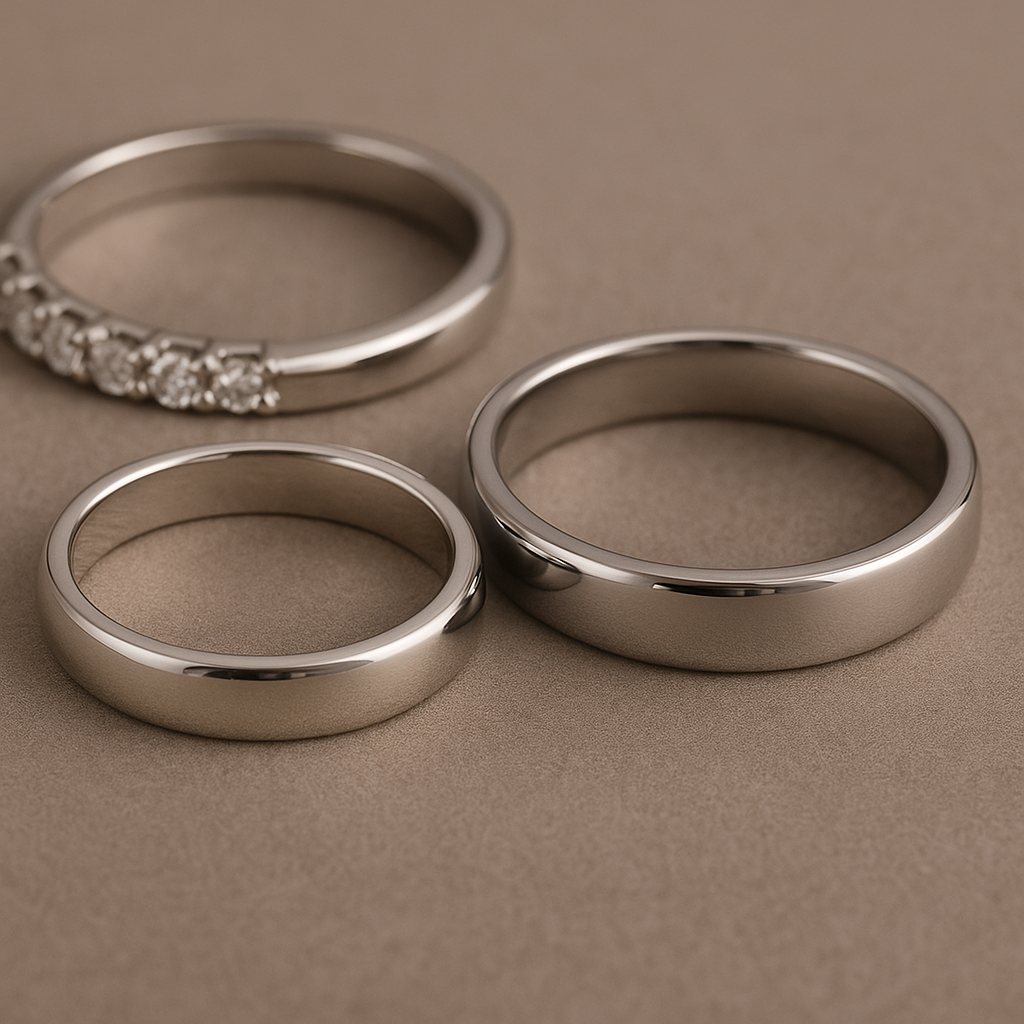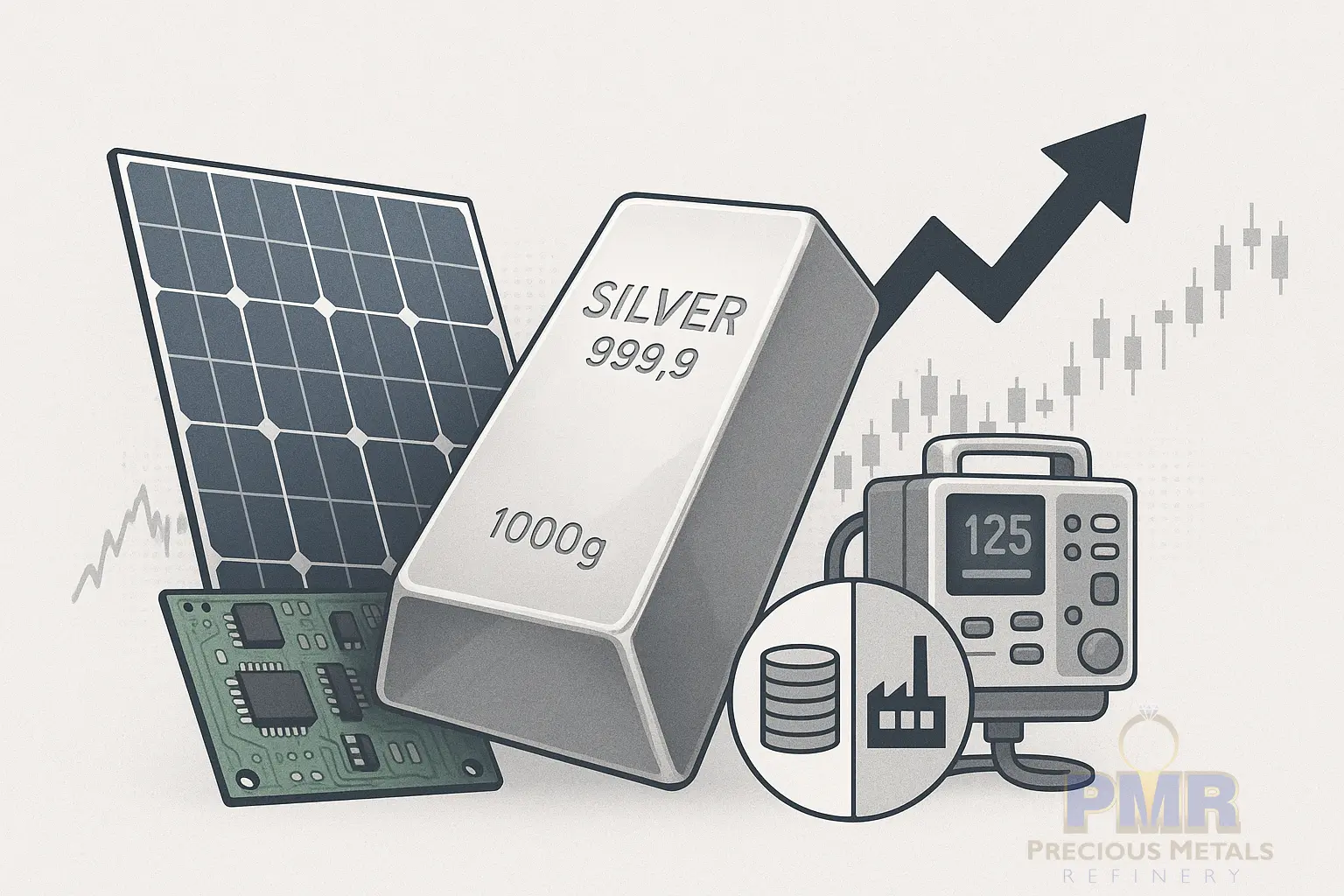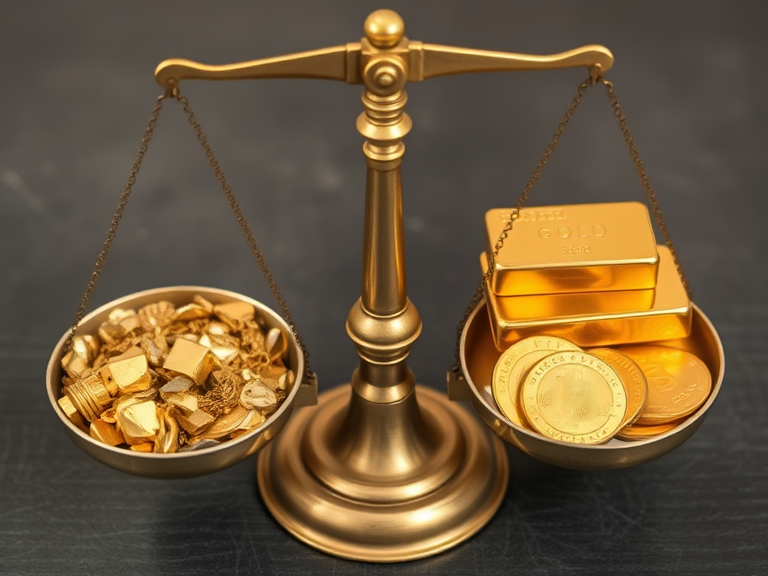Most people assume platinum and white gold are basically the same since they look similar, but when it comes time to sell, they are valued very differently. Buyers look at purity, weight, condition, and current market demand, and each metal behaves differently on those points. This guide breaks down how platinum and white gold are priced, what affects resale value, and what to know before bringing your pieces in.
What They’re Made Of (and Why It Matters for Value)
Platinum
Platinum jewelry is commonly stamped PT950, which indicates that the piece is about 95 percent pure platinum. That higher level of purity is one reason platinum can retain strong resale value, since more of its weight is precious metal.¹
Platinum is a naturally occurring metal found in regions such as South Africa, Russia, Canada, Zimbabwe, and Australia.² Even though platinum can be found in a relatively pure form, it is typically blended with metals like palladium, copper, or rhodium when used for jewelry. Pure platinum is extremely dense and hard, which makes it durable but difficult to shape. By creating a 950 platinum alloy, jewelers get a metal that is still long-lasting but easier to work with for detailed settings and everyday wear.³
White Gold
White gold is not something that is mined in its own form. It starts as pure yellow gold that is blended with other metals to create a lighter, silvery appearance. This blend is known as an alloy, which simply means a mixture of two or more metals. In the case of white gold, the gold is combined with metals such as palladium, silver, or sometimes nickel to change both the color and the working properties of the metal.
Most white gold jewelry is made in 14K or 18K purity. A 14K piece is about 58 percent pure gold, while 18K is about 75 percent pure gold. The karat stamp on a piece tells you how much of the total weight is actual gold versus the alloy metals. Because the gold content varies, the resale value of white gold is closely tied to the karat purity and the overall weight of the piece.
Why White Gold Looks “Whiter” on Day One
White gold is often finished with a thin rhodium plating to brighten its color and give it a reflective shine. That coating can wear over time, which is why some white gold pieces need to be re-plated occasionally to maintain their appearance. However, the underlying value is still based on the gold content itself. Platinum is naturally white and does not require plating.¹ ³
Durability, Wear, and Weight
Platinum is dense and heavy for its size, and it tends to displace rather than lose metal when abraded, developing a soft “patina.” ¹ ² White gold is lighter and typically harder on the surface, but tiny amounts of metal can be removed over years of polishing.³
Allergies and Comfort
People sensitive to nickel sometimes react to certain white-gold alloys. Rhodium plating can help, but it can wear away.³ Platinum is generally considered hypoallergenic.¹ ²
How Buyers Evaluate Your Piece
When we price platinum or white gold, we weigh and test the metal, verify purity, and check the secondary market for any brand or design premium.
The ‘Melt Value Floor’ Equation
Weight × Purity × Live Market Price serves as the baseline for both platinum and white gold. Use our gold price calculator to estimate the melt value of your jewelry.
Design or Brand Premium
Signed pieces (Tiffany & Co., Cartier, etc.) or desirable vintage styles can add value beyond melt.
Condition and Stones
Diamonds and other gems can boost the offer if they are high-quality and in demand.
Market Demand
Platinum demand in bridal cycles and gold price trends both influence day-to-day payout.
Maintenance and Ownership Costs
White gold: occasional rhodium re-plating keeps the bright-white look. Frequency depends on wear.³
Platinum: no plating needed. It can be polished, but many owners like the natural patina.¹ ²
Which “Holds Value” Better?
If we are talking melt value only, platinum’s high purity and density often give it an edge by weight, while white gold value scales with karat and total grams. For resale as jewelry (not just scrap), brand, condition, and style can outweigh the metal difference.
Ready to Sell?
If you are considering selling platinum or white gold jewelry, we can evaluate it on the spot, explain its purity and weight, and give you an instant offer. Stop by any PMR location or book an appointment online. If you want to keep learning, see our related guides.
Frequently Asked Questions
Platinum is usually 90 to 95 percent pure in jewelry form, so most of the weight you are selling is actual precious metal. White gold contains much less gold by comparison, since 14K is 58.5 percent gold and 18K is 75 percent. Because of this, platinum often carries a higher melt value per gram.
Platinum is much denser than gold. The same size ring in platinum will weigh noticeably more than a white gold version. Since buyers calculate melt value using weight and purity, platinum’s density means there is simply more precious metal in the piece. This usually leads to a higher melt value, especially for solid items like bands.
White gold often has a thin rhodium plating that gives it a bright, cool shine. Over time that coating wears away, which is why some pieces need re-plating to keep their color even. The plating itself does not affect melt value because buyers test and pay based on the gold content underneath. It can affect the cosmetic condition of a jewelry piece, which sometimes matters if the item is being evaluated for resale as finished jewelry rather than for metal value.
Not necessarily. Platinum usually has a higher purity and tends to weigh more, but that does not automatically make it the better choice. White gold is easier to resize, can be more affordable to purchase, and is often used in designs where weight matters. When selling, the piece with stronger brand recognition, better condition, or more desirable style may bring a higher offer regardless of metal.
Karat directly reflects purity. A 14K piece contains 58.5 percent gold and an 18K piece contains 75 percent. Higher karat means more gold content, and more gold content usually means a higher melt value. When a buyer tests a piece, they calculate weight multiplied by purity multiplied by the current gold market price to determine the metal value baseline.
Yes. Diamonds and other gemstones are evaluated separately from the metal. If the stones are natural, well-cut, and in good condition, they can raise your overall offer. If they are chipped, mismatched, low clarity, or lab grown, the value may vary. Even if the stones do not bring additional value, buyers will remove them before refining, so bringing everything in together is always helpful.
Bring the item itself, plus any certificates, receipts, boxes, or documentation if it is from a known brand. Stamps like PT950, 14K, 18K, or 10K help confirm purity, but buyers will still test each item. If you have multiple pieces, keeping them grouped by metal or karat makes the process smoother.






